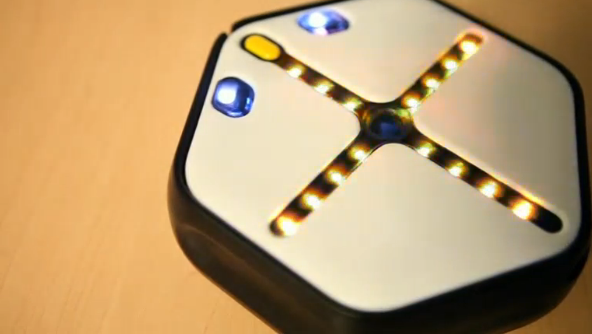
CAMBRIDGE, MASSACHUSETTS, United States (Reuters) – Root looks like a smoke detector but is actually a sophisticated robot. A magnetic surface, wheels, and an impressive arsenal of sensors allow it to navigate a classroom whiteboard. But Root isn’t actually programmed to do anything. Its tasks and functionality hinge on a child’s imagination.
The robot is capable of driving and drawing as well as playing music, but to operate Root needs instructions, a line of code. Zivthan Dubrovsky of Harvard’s Wyss Institute recalls testing out Root with kids for the first time.
“If you ask kids can you make a text based java script line follower? They go ‘no that’s hard, can’t do that’, but we can put level one in front of them and they can do it in minutes,” he said.
Level one introduces kids to the principles of programming using an interface of simple commands and pictures. As they become more adept, they jump to levels 2 and 3, at which point writing computer code becomes second nature, according to Dubrovsky.
He says getting kids interested in the abstract world of programming isn’t easy, but thinks Root can help with that.
“We are not trying to create a fun toy where you are just making a racing game. We are going to figure out how to make the racing game and that is going to be a lot of work, a lot of perhaps negative energy. But then there is so much positive energy at the end that it is worth the effort,” he added.
The team hopes to partner up with education companies to develop curriculums based around Root with the hopes of enticing schools to add the robot to classrooms.
“By adding a robot into the classroom you are actually adding a third agent into the classroom and you enable a new interesting way of teaching where the students can become the teachers, teaching the robot to do things,” Dubrovsky said.
While at the same time learning a new skill, one that is increasingly important in a digital world where knowing how to code could become just as important as knowing to read and write.








